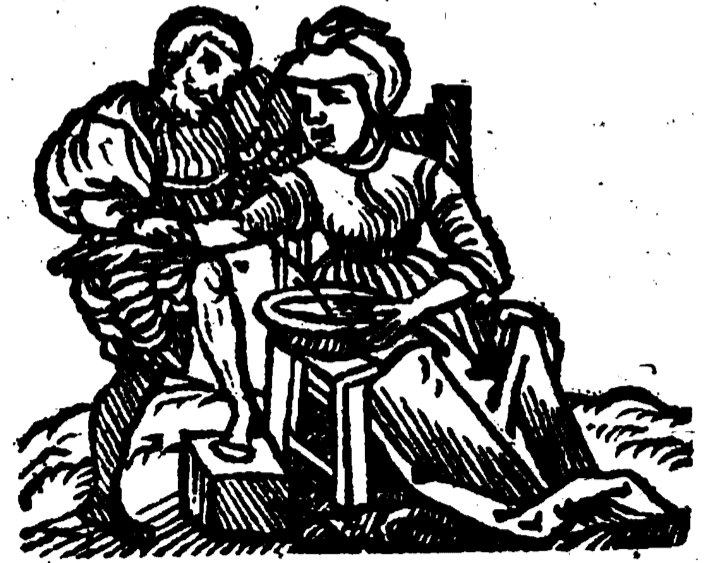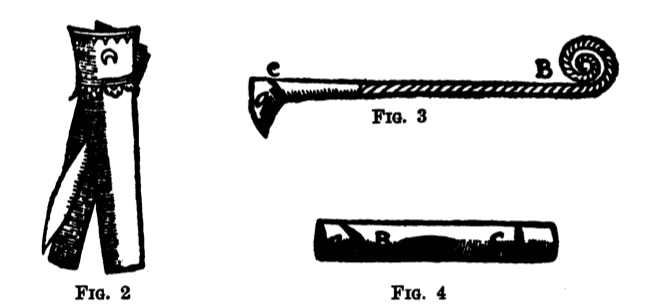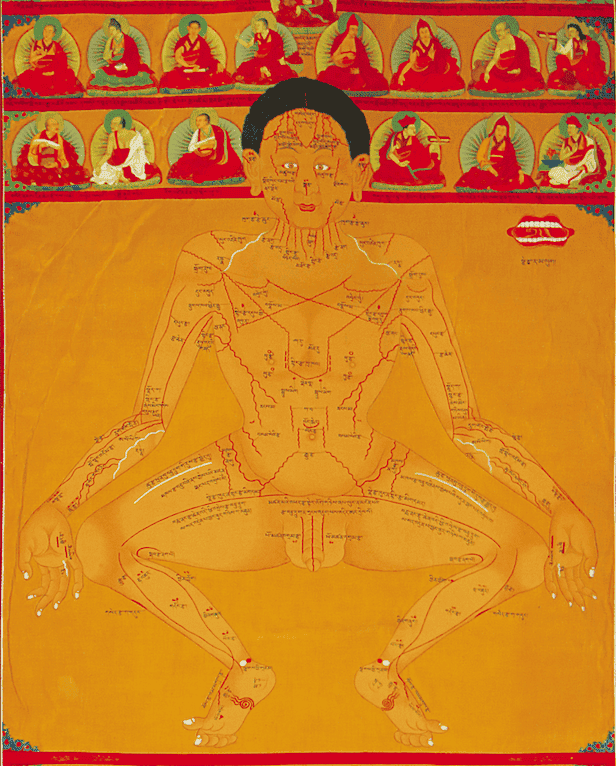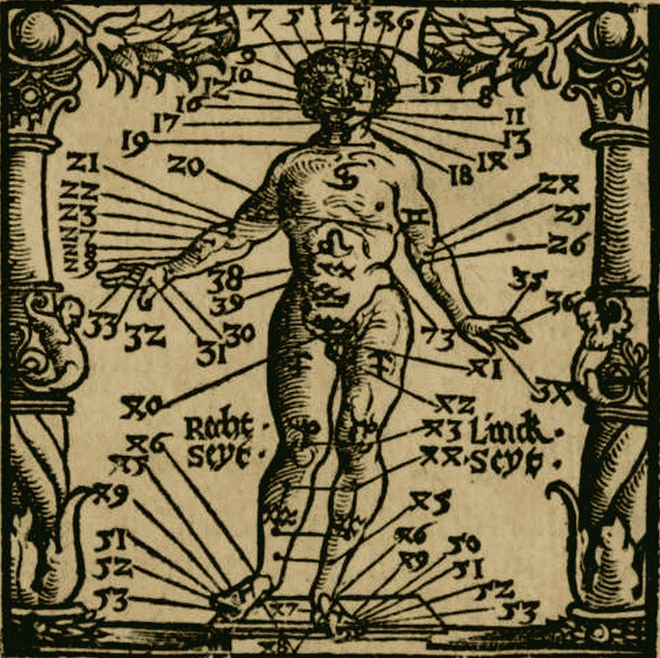Bloodletting
Part 1Overview of Bloodletting
By Adam Tate
This is part 1 of a series on Bloodletting
Bloodletting Part 2: The Veins of Bloodletting NOTE: Parts of this article first appeared in Lantern Magazine,
Bloodletting and Acupuncture, Adam Tate, Jan. 2017
Read the full article at Academia
Introduction:
|
Also called Phlebotomy and Venesection, Bloodletting is the extraction of Blood for therapeutic (or ritual) purposes. It is a ‘Universal evacuation of fullness of Humors or Plethory’ (Culpeper), in other words, a method for relieving excess of Humors and Blood. |
Bloodletting is most commonly performed with a needle or a lance. Other types of Bloodletting include Leeching and Wet Cupping (Cupping with Bleeding). While they have slightly different effects and uses, they all involve removal of Blood from the body. |
 Neue Artznei und Practicierbuchlin, Bock, 1551
Neue Artznei und Practicierbuchlin, Bock, 1551Benefits of Bloodletting
|
Bloodletting has the effect of removing Blood and thereby freeing up flow to the area that was bled. It can also be effective to remove Blood stasis from a particular area, for example, Varicose and Spider |
veins in the Lower leg. Some interesting points are made in the Theory and Practice of Bloodletting (Stern, 1915): |
|
‘..it is an incontraverticle fact that, even after the withdrawal of small amounts of blood, the lymph system is increased from ten to thirty per cent, and that when bloodletting has been performed repeatedly, the lymph may attain twice its former amount and velocity. Furthermore, the abstraction of a sufficient quantity of blood causes a dilation of the capillary vessels, and there is little doubt that to this effect must be assigned the feeling of warmth and the tendency to perspiration after bloodletting. In this connection I wish once more to emphasize the fact that bloodletting is by far the most reliable means for the regeneration of the blood as it stimulates the hematopoietic organs to renewed and more energetic activity. Newly-formed erythrocytes have been found in large numbers in the veins proceeding from the bone marrow, and likewise in the spleen, within an hour after the operation’ |
|
Bloodletting is generally regarded as a draining or purging therapy for excess cases. However, depending on the amount of blood and point used, Bloodletting can also be tonifying. For example, the removal of Blood has been associated with rapid hemopoiesis. The tonifying effects of Bloodletting were reviewed in a Chinese article in 2012 (View here) |
Small amounts of Blood removed, and particularly the pricking of a point has a stimulatory effect similar to Acupuncture. Its tonifying effect in this case is twofold: by stimulating the nerve pathway and meridian into activity, as well as enhancing flow of Qi and Blood by removing minor obstructions in the circulation. |
|
1. Bleeding is most suitable from late Teens to middle aged. The vey Young and Elderly should be Bled only a little (2, 3 or 4 ounces), and only if strong. 2. Bleeding is best performed on those with Heat, excess, and also for obstruction and stagnation of |
Blood or Humors. However, small amounts can be taken from non-excess cases too. 3. Ideally, it is performed in the morning, but for practical reasons it can be done anytime. |
 Instruments traditionally used to draw blood, Theory and Practice of Bloodletting, Stern, M.D., New York, 1915
Instruments traditionally used to draw blood, Theory and Practice of Bloodletting, Stern, M.D., New York, 1915How to Bleed
|
1. Sit or lie the patient to allow easy access to the place to be bled. 2. The area is cleansed with an alcohol swab. 3. Using a Lance or Hypodermic needle, prick the veins to be bled. 4. The blood is allowed to flow into a cup or bowl. In case small veins are pricked, cotton wool applied over the bleeding site will be sufficient to collect the Blood. 5. Blood is allowed to flow depending on the |
patient, vein and disorders being treated. Typically, large veins are bled 200–500mls. Small veins may be much less, and the tiny veins bled may sometimes only bleed a couple of drops. 6. The masters said to bleed until fresh blood is drawn. 7. After Bloodletting, rest and keeping warm is important. Usually the patient will be asked to sit and stay in the clinic for 15 minutes before leaving. |
Contraindications for Bloodletting
|
1. Hemophilia; those on anticoagulants. 2. Those that are cold and weak by nature. |
3. Traditionally, it was said to avoid bleeding in Cold weather, after bathing, directly after eating or sex. |
 Tibetan Thangka showing Bloodletting points
Tibetan Thangka showing Bloodletting pointsof Tibetan Medicine |
 Bloodletting Points of the West
Bloodletting Points of the WestSpiegel und Regiment der Gesundtheit, Ryff, 1544 |
|
In the Western Tradition, there were 32 primary Veins recognised, 16 on the Head, 16 on the Body. In the Arm, there are 3 Primary Veins: Cephalic (Head, along Large Intestine Meridian), Cardiac or Median (Heart, along Pericardium Meridian), Basilic (Liver along Heart Meridian). These are opened to clear Heat and Excess primarily of the Head and Upper Body. |
In the Leg there are 3 Primary Veins: Ischiatica (outer ankle, under the Lateral Malleolus, GBL Meridian), Saphena (inner ankle, under the Medial Malleolus, Kidney Meridian) and Poplites (behind the Knee, Bladder Meridian). These are generally used for diseases of the Lower Body (below the Diaphragm). They move Blood downwards which opens Obstructions in the Lower Body, and promote Menstruation. |
1. The Three arm Veins: Head (Cepahlic), Heart (Median), and Liver (Basilic). These were the most commonly bled veins in classical Bloodletting. however, they require a more clinical setting as more Blood is drawn and there is greater chance for side effect or infection.
2. Between the Eyebrows:
Headache, skin diseases of the Face, Acne, diseases of the Brain
3. Veins above or behind the Ears:
Migraine, chronic Catarrh, acne or skin diseases of the Face, Toothache
4. Vein in the Tip of the Nose:
Chronic Headache, Redness of the face, Eye diseases, poor vision, Nose diseases
5. Veins under the Tongue:
Bled for Tonsillitis, abscess in the Mouth or Throat, diseases of the Jaws, Toothache
6. Salvatella (between Ring and Little Finger)
Right hand for Liver Disease, Left for Spleen; Fever, Lung and Stomach diseases
7. Vein Behind the Knee:
Promotes Menstruation; Lower back pain; Pain in the back or hip; Joint pain of the lower limbs; Bladder pain
8. Sciatic vein in both ankles:
Sciatica, Leprosy, Bladder pain, Dysuria, Swollen Testicles
9. Saphena, on the inside under the ankles
Diseases of the Uterus and Testicles, Hip and Leg pain, promotes Menstruation, Infertility

|
Vein being bled on the inside lower leg using a hypodermic needle and collecting the blood in a kidney dish. (Calcutta Unani Medicine College, 2019) |
Recent research (Khosrow) has demonstrated that there is quite a variation in the Blood removed via wet cupping compared to regular Bloodletting (Phlebotomy). Blood samples from a number of subjects was compared before and after removal of Blood, half using Hijama (Wet cupping) and half Phlebotomy. There was a significant difference between serum values of triglyceride, cholesterol, urea, and uric acid, all levels being higher in the wet cupping group
Research on Bloodletting
1. Bloodletting in Inflammatory Diseases. (See here)
2. Recent Chinese research found Bloodletting superior to acupuncture in Rheumatoid Arthritis treatment. (See here)
3. Bloodletting therapy for treating patients with chronic urticaria: A systematic review & meta-analysis protocol (See here)
4. New observations support William Osler’s rationale for systemic bloodletting. (See here)
5. Effects of bloodletting pricking, cupping and surrounding acupuncture on inflammation-related indices in peripheral and local blood in patients with acute herpes zoster. (See here)
6. The Role of Phlebotomy (Fasd) and Wet Cupping (Hijamat) to Manage Dizziness and Vertigo From the Viewpoint of Persian Medicine (See here)
Sample Bloodletting Treatments
|
Acne –Bleed local points, for example tip of the nose, between eyebrows, corners of the mouth, chin etc. Amenorrhea, Chlorosis: –bleed the ankle veins, behind the Knee, Saphena –usually 50–100mls is sufficient, repeated after 2 or 3 weeks if necessary Angina Pectoris –can be relieved significantly; open a vein in the elbow Asthma of Cardiac origin –weeks of relief have been obtained after taking blood once (250–500mls) Atherosclerosis, Aneurism –great benefit often occurs after Bloodletting Back Pain, Lower: –Behind the Knee; Sciatic veins in the Ankles; Saphena; local veins in the area of pain Cerebral Hemorrhage: –open a vein in the arm Emphysema: –open an arm vein Epilepsy –Head vein; between the Eyebrows; –250–300mls of Blood taken every 2–3 weeks has given great relief in some cases with frequent seizures Eye diseases, Opthalmia –between the eyebrows; Mid eyebrows; tip of the Nose; veins next to the eyes Headache, Migraine –Mid eyebrow; between Eyebrows; Tip of Nose –painful (‘ashi’) points on the scalp can be bled a couple of drops, often with miraculous effect Heart Disease, Mitrial stenosis –remove 250mls from one of the elbow veins. Heart failure, chronic valvular heart disease –remove 250mls from one of the elbow veins. Hypertension –removing 250–500mls can reduce blood pressure ‘magically’ |
Liver diseases: –Salvatella; Saphena Meningitis, Acute: –open a vein in the arm Mouth, Teeth, Gums diseases –corners of the Mouth; veins under the tongue Nephritis: –open a vein in the arm –behind the knee; in the ankles Pain, Neuralgia –local veins in the area of pain –or open a vein in the foot to divert from the Head Peritonitis: –open a vein in the arm Pneumonia: –open a vein in the arm Polycythemia –regular Bloodletting is effective to control Sciatica, Leg pain –Bleed behind the knee; Ankle veins Skin diseases, Pruritus –removing 250–500mls of blood often gives good relief. It can be repeated after 2 weeks if needed Testicles, Swelling, Abscess of –Sciatic veins in the ankles; Throat, Acute sore, Tonsillitis –Bleed the tip of the Thumb and first finger (TCM) –Bleed under the Tongue Throat, Abscess of –first the Head vein, then the veins under the Tongue Uremia, acute & chronic –great relief occurs after Bloodletting Varicose Veins –Behind the Knee; Both ankles –bleed venules in the feet and ankles, beginning with smaller and more distal veins |
Continue to Part II
The Veins of Bloodletting
